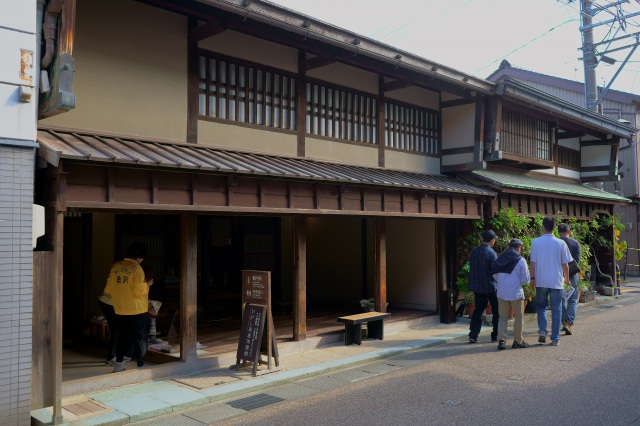Tour around the Higashi Chaya District & Kazue-machi Chaya District full of emotion
This half-day course offers a relaxing tour of the Kazue-machi Chaya District, Higashi Chaya District, and the banks of the Asanogawa River, immersing visitors in the lustrous and tranquil atmosphere of Kanazawa, a city of water, greenery, and history.
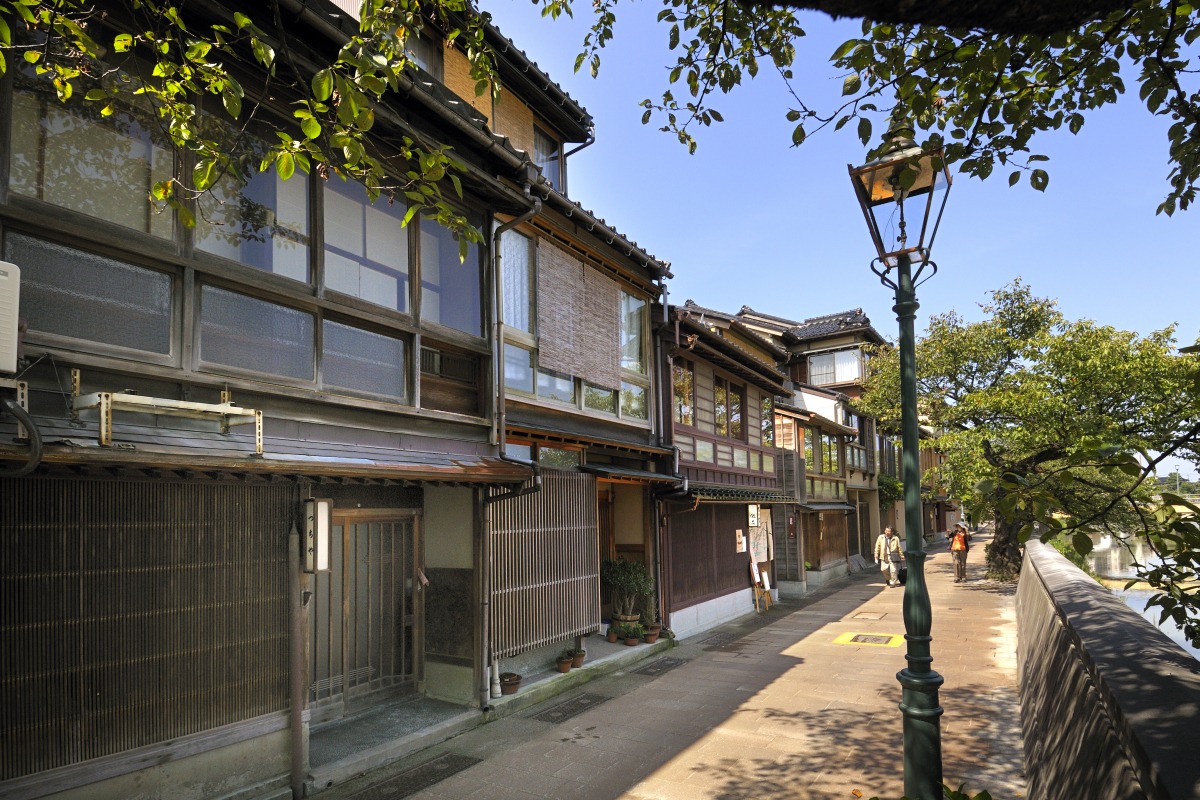
Take the Kanazawa Loop Bus RL (clockwise route) for approx.12 minutes.
Get off at "Hashiba-cho (Kinjohro-mae)" bus stop.
Kazuemachi Chaya District
Kazuemachi Chaya District, alongside Higashi Chaya and Nishi Chaya, is one of Kanazawa's Three Chaya Districts. The narrow alleys lined with latticework facades preserve the traditional atmosphere of Kanazawa and have been designated as an Important Preservation District for Groups of Traditional Buildings. The district was named Kazuemachi after Tomita Kazue's residence in the Edo period. It also frequently appears in the works of the renowned author, Kyoka Izumi, whose Izumi Kyouka Kinenkan Museum is located nearby.
Situated along the Asanogawa River, this beautiful district is home to traditional ryokans and teahouses. At dusk, when the lights come on, the atmosphere becomes truly magical. The occasional sound of the shamisen adds to the charm.
As you wander down the narrow alleys, you'll find the quaint "Akari-zaka" (Bright Alley) and "Kuragari-zaka" (Dark Alley). Near Nakano Bridge is Kazuemachi Ryokusuien, where you can see the restored inner moat of Kanazawa Castle. With benches and restrooms, it's a great place to take a break.
This small and quiet district is perfect for those who prefer a peaceful atmosphere. It's located just a short walk across the Asanogawa River from Higashi Chaya, so why not visit both and compare their unique characteristics?
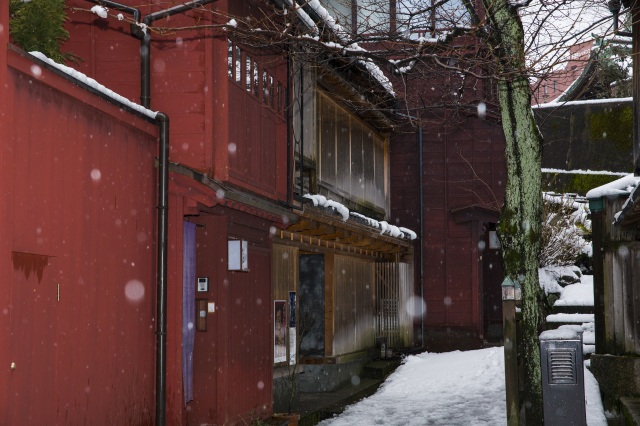
Kuboichi Ototsurugi-gu Shrine
A shrine associated with Kyoka Izumi, perched at the top of Kuragarizaka (a dark slope).
The shrine is located in Owari-cho, a townscape of stately merchant houses, and has a long history as the birthplace of the market in Kanazawa. The stone stairway leading up the hill past the shrine grounds to Kazue-machi Chaya District is known as "Kuragarizaka"(a dark slope), and is a famous sightseeing spot.
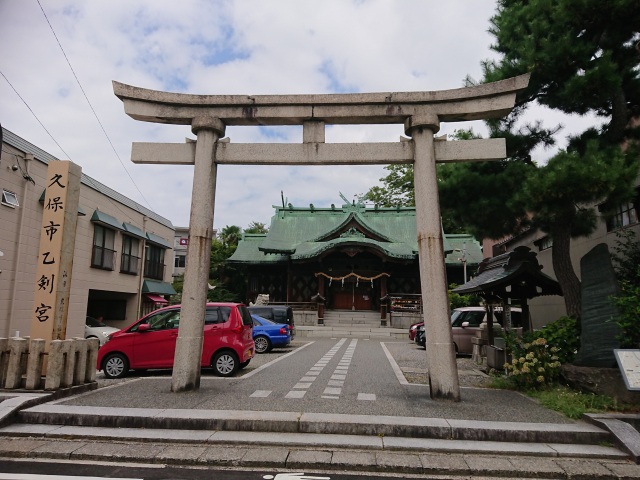
Naka-no Hashi Bridge
Wooden bridge overlooking cherry blossoms in the Kazue-machi Chaya District
The wooden Naka-no Hashi Bridge retains the historical atmosphere of the Edo period (1603-1868) and from it you can contemplate the beautiful view over the Kazue-machi Chaya District and Asanogawa River. In the spring, it is a famous spot to enjoy cherry blossoms.
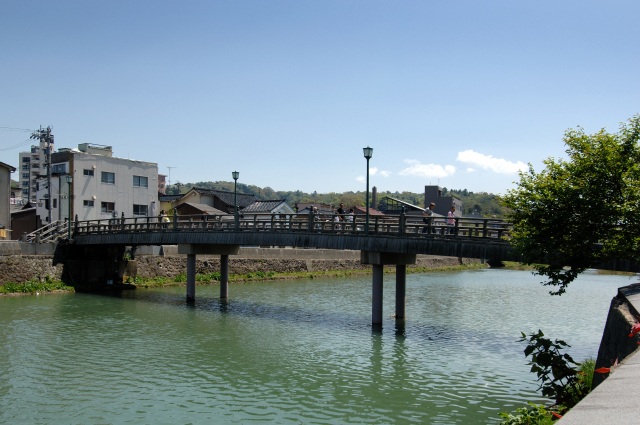
Ume-no Hashi Bridge, Taki-no Shiraito Monument
An atmospheric wooden-style bridge nestled in the Geisha district
The wooden-style Ume-no Hashi Bridge spans the upstream side of the Asanogawa Ohashi Bridge. This bridge is for pedestrians only and is convenient when walking from the city center where Kenrokuen Garden and other places are located to Higashi Chaya District. The area around the bridge was the setting for "Giketsu-kyoketsu", a novel by local writer Kyoka Izumi, and a statue of the heroine, Taki no Shiraito, and a monument have been erected there. It is illuminated at night, so it is recommended to stop by after enjoying dinner at Higashi Chaya District.
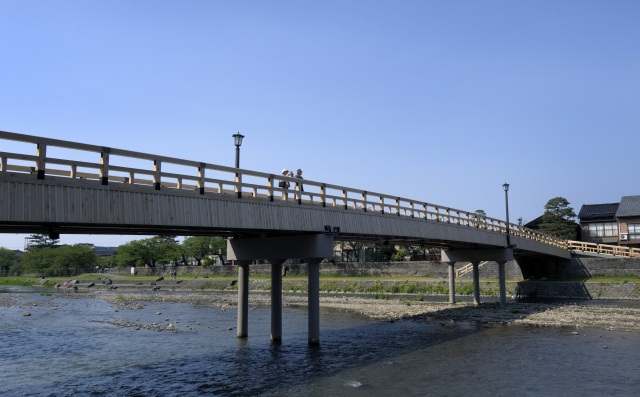
Utasu Jinja Shrine
The origin of this shrine is said to be that an old mirror dug up from the riverside of the Asanogawa River had a pattern of a rabbit and a dragon, and the shrine was dedicated to the god Utatsu (means rabbit and dragon). After the death of Lord MAEDA Toshiie, the founder of the Kaga Domain, Utasu Hachimangu Shrine was built and became a clan shrine enshrining the spirit of the Maeda family. In the back of the precincts, there is a "Sasayu* water well of Lord Toshitsune (the third of Kaga Domain)" which is said to have cured Tsunanori (the fifth of Kaga Domain)'s illness.
*Sasayu...Sake-infused hot water used in Edo period (1603-1868) to bathe children after they were cured of pemphigus.
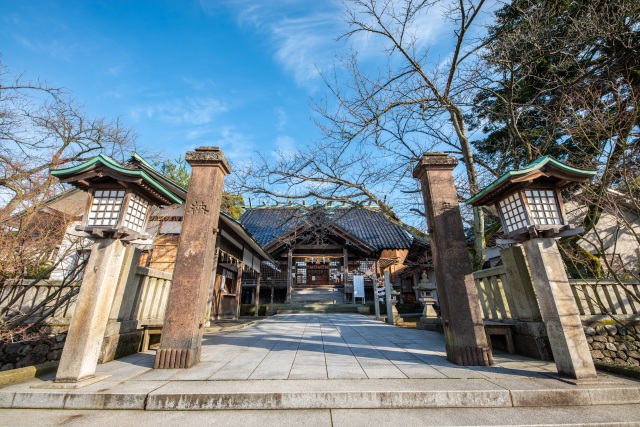
Higashi Chaya District
Discover one of Kanazawa’s largest geisha districts
In Japanese culture, geisha houses have been traditional places for feasts and entertainment since the Edo period. Also referred to as “chaya”, they are where geishas entertained wealthy nobility and rich merchants. Geishas are female Japanese entertainers who perform dances and play traditional Japanese instruments.
The central part of Kanazawa was once dotted with a number of geisha houses, but in 1820, these were moved to three specific districts away from the city centre. The largest one of these – and arguably the most famous – is the Higashi Chaya district.
The geisha houses in Higashi Chaya have a stunning traditional appearance. A geisha house is characterised by the beautiful lattice on the outer side of its first floor, called “kimusuko”, and the Japanese-style guestrooms located on the second floor. During the Edo period, the construction of two-story buildings except geisha houses was prohibited, making their appearance all the more striking.
These historical geisha houses along with Kyoto's Gion and Kanazawa's Kazue-machi have been designated as Japanese cultural assets. No other geisha districts have been designated as cultural assets for Japan, making Higashi Chaya even more special.
The district includes facilities where you can see the interior of a geisha house that was built almost 200 years ago, as well as quite a few old buildings have been refurbished into restaurants, cafes, and souvenir shops. Additionally, it takes a mere three minutes on foot to reach the banks of the Asano River from Higashi Chaya, making it an excellent area to explore afterwards.
The Kanazawa City Tourism Association holds a geisha performance show in the three geisha districts of the city on designated Saturdays, so make sure you plan your visit accordingly.
Click here for stores in Higashi Chaya District where you can use the special Gourmet Ticket Kanazawa Bimi.
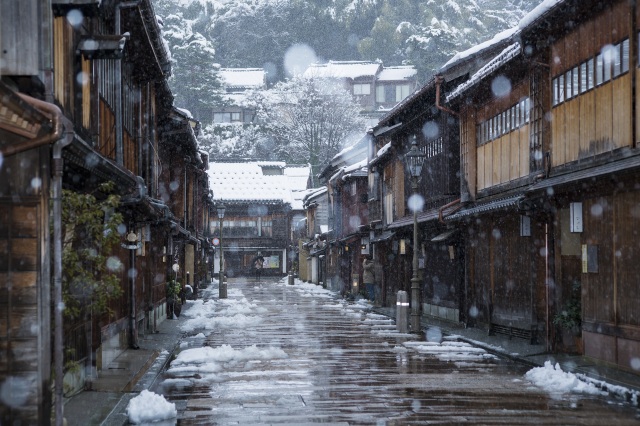
Higashi Chaya Kyukeikan Rest House
This Machiya (traditional Japanese wooden townhouse) rest house was built at the end of the Edo period (1603-1868) and was restored in 2003. The building originally served as a pawnshop, and today, it is a rest station for tourists, where volunteer sightseeing guides stand, to give information (in Japanese only) about Higashi Chaya District, and other local sightseeing spots.
